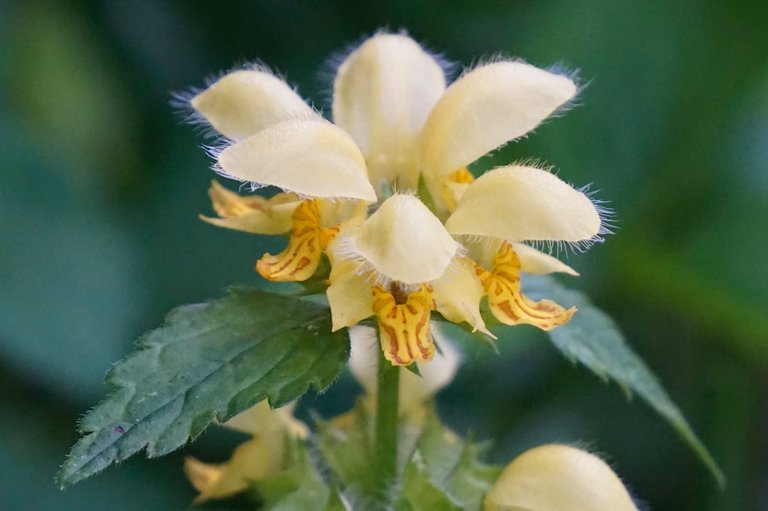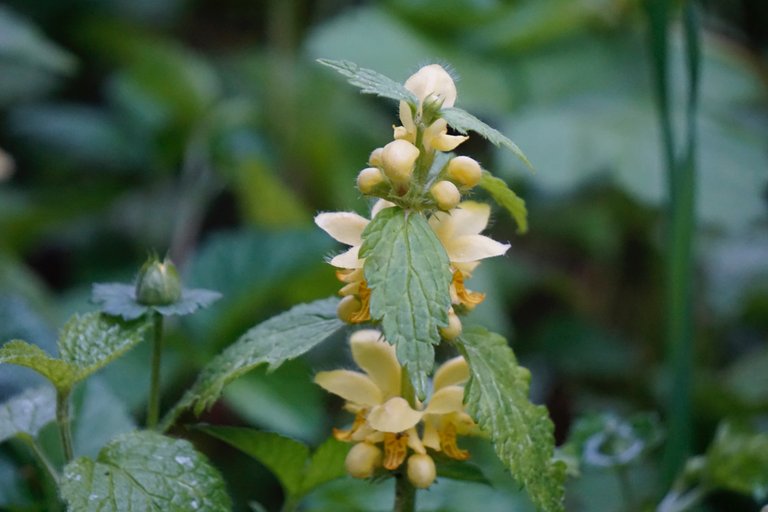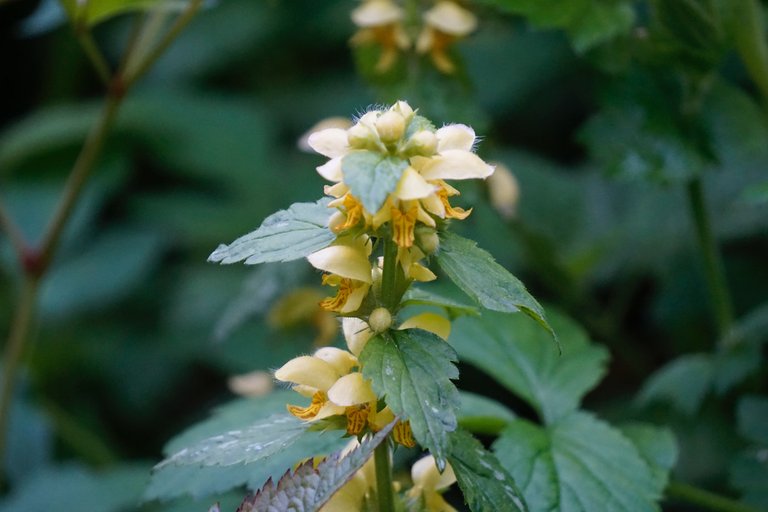Hey dear community, first of all I would like to welcome you all to my new post and hope you had a day that brought some interesting experiences into your life! In this post, I would like to discuss the ecological benefits of a plant and hope you can learn new things.
Today I took these pictures of golden dead-nettle which is also known under the known name Lamium galeobdolon and it is assumed that the origin is in Central Europe and can be recognized by the leaves, which often have a silvery appearance. In the wild, the perennial golden dead-nettle can be found on roadsides or in forests and thrives best in semi-shaded places and can easily propagated by division, cuttings or seeds and can be described as relatively easy to care for. A typical characteristic of this plant are the typical yellow flowers, which appear from around April and offer plenty of pollen and nectar for different types of insects and it can be quite worthwhile to cultivate the plant, however, it should be noted that in countries where the plant is not native, it is often considered an invasive neotype, which means that it can pose a danger to the native plants. The plant is pollinated by bumblebees and offers an important source of food for bees, bumblebees, hoverflies and other insects and sometimes caterpillars can be found on the leaves. In addition to the ecological value, it can also be worthwhile to cultivate the plant because of its medicinal properties and it is edible in all parts and is particularly popular as a raw addition in salads and is particularly popular because of the anti-inflammatory properties and has already been used by ancient cultures. As always, I would like to mention here that in the event of illness, you should always consult your trusted doctor or pharmacist about the correct use or possible side effects in order to avoid complications.
Thanks for stopping by and I hope you could learn something new about nature! I captured these pictures with my Camera Sony Alpha 6000 plus 55-210 mm lens.



Earlier I had no knowledge at all about these flowers, now my knowledge has increased.
Happy to hear that you were able to learn something new :)
#hive #posh